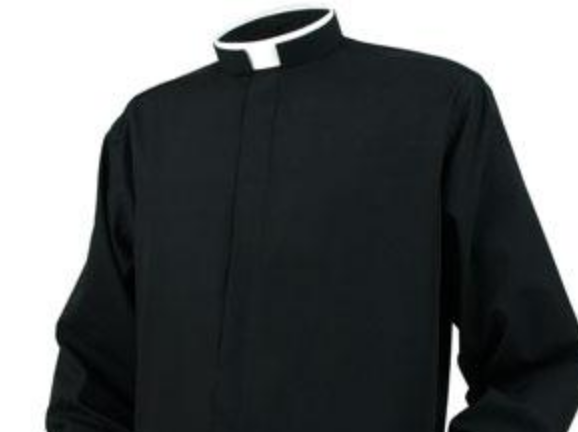
If you know anything about how newsrooms work, then you know — as your GetReligionistas often stress — that reporters do not write the headlines that top their stories.
Now, add to that fact another sad reality: Many readers never make it past the headline when they are scanning a newspaper. Then there are readers who struggle to make sense of a story that — in their eyes — seems to clash with the contents of the headline.
All of this underlines the importance of copy-desk pros writing good headlines.
This brings me to a recent story here in East Tennessee that ticked off a GetReligion reader. I mention this topic because the “mistake” made in this case is one that readers ask me about rather frequently. At the heart of this issue is a simple fact: When most Americans (and some journalists fall into this category) see the word “priest,” they automatically assume that this is a reference to a Roman Catholic priest.
In this case, the headline pointed toward events that could have painful and even fatal consequences. Thus, the stakes were high in this particular headline, which stated:
Infected Chattanooga priest may have exposed others to coronavirus, church says
Now, if you read the actual Knoxville News Sentinel story, the confusion was cleared up quickly — by the second paragraph.
A Chattanooga priest who has tested positive for COVID-19, the disease caused by the new coronavirus, may have inadvertently exposed others when he officiated a wedding, served communion and led a staff meeting, his church announced. …
Father Brad Whitaker, rector of St. Paul’s Episcopal Church in Chattanooga, fell ill shortly after returning from a conference held by the Consortium of Endowed Episcopal Parishes, the church said in a statement. At least six people who attended the conference, which ran from Feb. 19-22 in Louisville, Kentucky, have since tested positive for COVID-19, according to the consortium.
So the basic question is this: How many people read that headline and assumed this was a Catholic priest?
There’s no way to know. However, based on my experiences on the religion beat, it’s safe to say that many people thought that and never made it to the clarifying reference in the second paragraph.
So, should the headline have said: “Infected Episcopal priest in Chattanooga may have exposed others to coronavirus”? I think so.
By the way, the former copy-desk guy in me took the final two words off the original headline to keep the new one the same length, in terms of fit in a dead-tree-pulp newspaper. Also note — another source of emails I receive all the time — that the adjective form of Episcopal is “Episcopal,” not “Episcopalian” — which is the noun form.
This brings up another issue that I hear about from time to time. There are journalists who assume — when using church names — that the word “Catholic” is simply assumed by readers, if the name includes the word “saint.”
Thus, you see stories all the time about events at a “St. John’s Church” — if it’s Catholic — where the same newspaper would say “St. John’s Lutheran Church” or “St. John’s Greek Orthodox Church” in other cases (and, yes, I have seen Greek used when the church is actual part of another Orthodox jurisdiction).
So what’s the point? I realize that the Catholic church is huge and tends to dominate the news. But journalists need to be careful with these kinds of references — because clarity matters when reporters are handling basic facts. This is yet another case in which it’s important for newsrooms to have experienced religion-beat reporters to use as consultants on all kinds of content and style issues.
In conclusion, let me note some of the stunning details later in this report, a wave of facts that show how important clergy are in a community’s life and, at the same time, some of the risks involved in the basic ministries that clergy provide. Check this out:
In the weeks after returning from the conference, Whitaker appeared at several events and potentially exposed hundreds of people to the virus. His church released the following timeline of his public appearances:
* Officiated a small family burial the morning of Saturday, Feb. 22.
* Officiated a wedding the evening of Saturday, Feb. 22.
* Attended the 8 a.m. Eucharist on Sunday, Feb. 23 and served communion.
* Celebrated the 10:30 a.m. Eucharist on Sunday, Feb. 23 and served communion.
* Led a staff meeting on Tuesday, Feb. 27.
* Celebrated the 12:05 p.m. Eucharist on Monday, March 2.
* Attended the first Thorne Sparkman lecture on Wednesday, March 4.
The Chattanooga Times Free Press reported that, while serving communion Feb. 22, Whitaker shook hands with some 150 people, and that he appeared later that day at a benefit concert attended by about 75 people. The paper also reported Whitaker led a Feb. 28 memorial service for the Chattanooga Bar Association, which notified the 800 attorneys who count themselves members that they may have been exposed.
There are so, so many COVID-19 stories linked to religious congregations right now.
Just saying.













